Have you seen the cartoon – on Facebook recently – with two crows sitting on a beam in the middle of an expanse of lawn, looking off into the distance, for … something? Being a lover of both birds and words, I laughed like crazy. Not everyone does, apparently.
Crows are in the news in Vancouver these days, as they are every spring, as they protect their nests from potential predators, including humans walking down the sidewalk. You can read about the current “bit of a war zone” (in the words of George Clulow, president of B.C. Field Ornithologists) here: http://news.nationalpost.com/news/canada/they-do-draw-blood-crows-are-terrorizing-pedestrians-in-a-vancouver-neighbourhood
Personally, I adore corvids, crows included. And I’m in good company. Van Gogh, for example, immortalized them in this 1890 painting.
And when I took a Cornell Lab webinair called The Secret Lives of Crows the instructor, Dr. Kevin McGowan, urged us to avoid the term “a murder of crows” on the basis that it’s unscientific and perjorative. He’d prefer, he said, “a bouquet of crows.” McGowan has done more than 25 years of research in Ithaca New York, home of Sapsucker Woods and the Cornell Lab of Ornithology on the social and reproductive behaviour of the American Crow (Corvus brachyrhynchos) – so I bow to his recommendation.
There are many corvids on Gabriola Island but most of them are Common Ravens or Steller’s Jays.
During the 2014 Christmas Bird Count (CBC) only 8 crows were counted here – versus 96 ravens and 35 jays. The crows we do have are the Northwestern Crow (Corvus caurinus) which is slightly smaller than the American Crow and has a more nasal call but “is so similar that the two may in fact be the same species.” (http://www.allaboutbirds.org/guide/Northwestern_Crow/id) Given the similarities, I think it’s fair to assume that McGowan’s findings apply to our crows too.
In Nanaimo, the city just across the strait, over 1000 crows made the 2014 CBC. Well, crows do prefer cities. They started moving into them, in large numbers, in the 1980s. McGowan explained that this press into urban environments was due in part to the fact that hunting is banned in cities. The sad fact is that crows have been hunted – by both farmers and “sport” hunters – since the dawn of time, and still are. In BC, crows are one of a select group of “Schedule C” birds that are not protected under the BC Wildlife Act – along with black-billed magpies, European starlings, house sparrows, rock doves and brown-headed cowbirds.
So, who can blame the crows, intelligent, social, family-oriented corvids that they are, for choosing to leave the countryside? Besides safety from hunters, city living offers the advantages of readily-available food (crows have adapted to scavenging our leftovers) and fewer predators, including raccoons, squirrels, owls, and hawks.
McGowan’s research shows that city and suburban nests are subject to less predation than rural nests and that 57% of city nests compared to 48% of rural nests are successful. There are disadvantages, though, to leaving one’s home in the country.
For one thing, that city ‘fast food’ is less easily digestible than the crow’s natural diet of invertebrates, fish, snakes, frogs, small birds and mammals, bird eggs, nestlings, fruit and seeds. And besides being less nutritious, the garbage that crows ingest in cities also carries the risk of contamination. This may not be a big deal for an adult crow but it can be deadly for a nestling.
In the end, though, the advantages and disadvantages of the two habitats appear to cancel each other out in terms of nesting success, and they end up with the same number of fledglings. Still, even though fewer rural babies survive, the ones that do are bigger than their city counterparts. They’re heavier by 40-50 grams, have longer legs and bills, and possibly (although this not yet proven) larger brains. McGowan and his team wondered: what makes the difference? Turns out it’s all that good old country grub. Researchers discovered this by feeding their city crows the kind of food mama crows would feed their babies in the wild. The result? Bigger nestlings. It seems that crows will eat junk food – to their detriment – just because it’s there. Seems we humans have that in common with them.




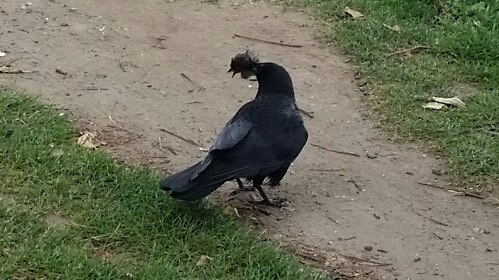
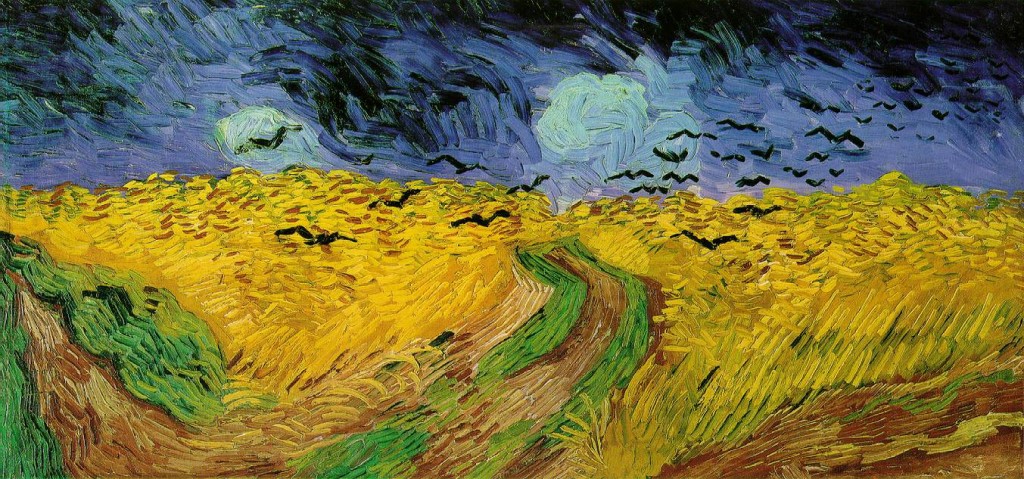
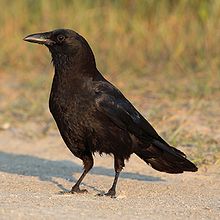
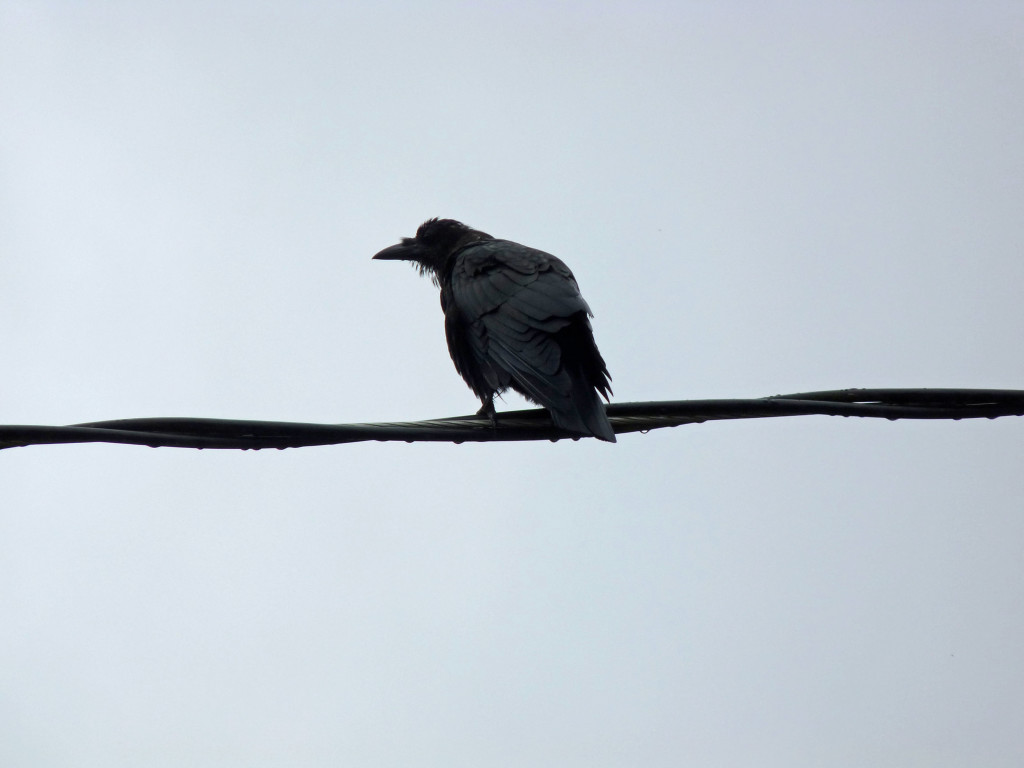

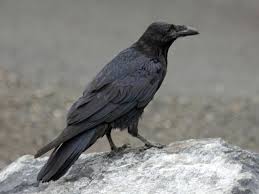

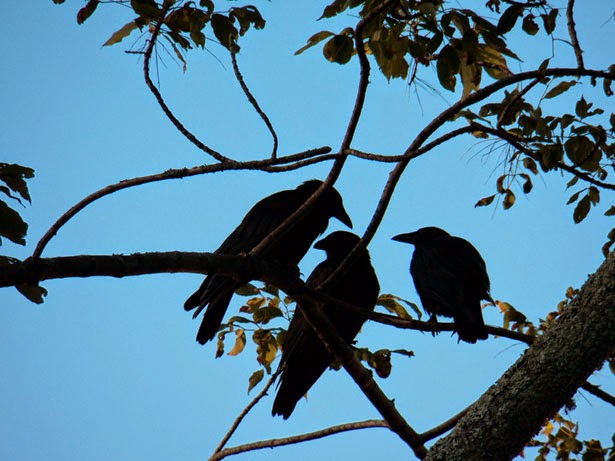
Doug – yes, those mama crows have their priorities very clear! Thanks again for the photo.
Your comments about “crow attacks” are certainly on point. Just yesterday while walking to and from our hotel near Stanley Park in Vancouver, we were regularly bombarded by a pair of crows who were attempting to protect one of their four young that had fallen out of its nest prematurely.
Thanks so much Tess. I certainly agree with you about corvids. Best of luck with the raven painting.
Wonderful article, so enjoy reading your posts as I learn something new each time. Corvids are one intelligent species that bring much humour and joy to ones life. I am presently working on a raven painting, as they are my favourite birds to paint. Thanks, Tess